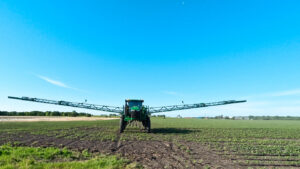Handheld near-infrared spectral imaging devices are giving cocoa farmers and processors a way to set fairer prices in a matter of seconds while also cutting out the middlemen
Singapore-headquartered agrifood business Olam International has partnered with sensor startup Consumer Physics to help improve its cocoa production by capturing data on the exact amount of cocoa within a cocoa bean pod. The company plans to use Consumer Physics’ SCiO hand-held, connected smart sensors to analyze the full moisture range in cocoa beans on the farm in a non-invasive way in under 60 seconds.
SCiO uses near-infrared spectral imaging to measure how molecules vibrate and interact with light, creating a unique spectral fingerprint of an item. The cloud-enabled device sends the fingerprint to Consumer Physics’ database where it’s cross-referenced and verified. The cloud then sends the results back to the users’ smartphone in a matter of seconds offering a precise measurement of the ratio of cocoa-to-moisture inside the opaque bean pod.
“Cocoa is produced on small farms around the world, especially in Southeast Asia and Africa. The way these farmers are compensated is according to the actual material inside the cocoa beans that they sell. Moisture content is the basic equalizer in the commodities market,” Dror Sharon, co-founder and CEO of Consumer Physics, told AgFunderNews. “In the commodities market, every gain you can make in productivity, no matter how small, translates to a big gain for the bottom line.”
Considering that cocoa is a $50 billion global industry, the supply chain has a big interest in ensuring a fair price. Paying for cocoa beans by weight means you might be paying for moisture content on top of the beans. By using near-infrared spectral imaging, buyers and sellers have an objective way to pinpoint the exact value of each cocoa haul.
There’s also a big benefit for the farmers. Using Consumer Physics’ sensors at the farmgate eliminates the need for middlemen who may try to take a cut of the profits between the farm and Olam’s processing facilities.
“Olam Cocoa has been working with smallholder farmers across the value chains it operates in, for years. Due to the scale of transactions and complexity of field analysis of the produce, traditional intermediaries have had a role to play,” Vijay Karunakaran, head of Olam Cocoa’s Indonesia operations, said in a press release announcing the Consumer Physics partnership. “But with technological developments, including IoT, Olam Cocoa is now leveraging its digital platform to directly reach the first mile of the cocoa supply chain.”
Having a more timely and accurate quality assessment tool like SCiO positions Olam to make deeper inroads into the cocoa value chain, he adds, while helping Olam feel better about the price they are offering farmers.
Olam’s Careful Approach to Technology
Singapore-based Olam is the third largest agribusiness in the world, which might lead one to believe that it has deep pockets to spend on trying out the latest innovations for food and agriculture. After all, supplying food, ingredients, feed, and fiber to 22,000 customers around the world with value chains spanning 60 countries is no easy task. Despite its impressive pocketbook, Olam has taken a reserved approach to technology innovation.
“We have realized that some companies have gone down the wrong path by adopting the approach of inventing the problem. They find a technology that’s exciting and try to force-fit that technology for a problem that they don’t have. This is why we want to be very deliberate about the problems first and then come to technology,” Olam’s president and group head of strategic investments and shared services Suresh Sundararajan told AgFunderNews last year.
Cocoa is one of its biggest operations with the company claiming to be the world’s leading supplier of cocoa beans and ingredients like cocoa powder, cocoa butter, and cocoa mass. Its goal is to produce 100% traceable cocoa from its direct origin supply chain by 2030.
This is a lofty task considering consumers’ ever-growing sweet tooth. Cocoa beans are sourced from a number of regions including Africa, Asia, and South America across a network of 650,000 cocoa farmers. Last year, cocoa producers reported surges in the amount of cocoa processed compared to a year earlier, with bean processing in Europe jumping to a seven-year high of 2.7%
The SCiO sensor has already proven useful in other industries like dairy production. Cargill Animal Nutrition is collaborating with Consumer Physics over a new technology platform for US dairy producers called Reveal. Reveal combines Consumer Physics’ SCiO with Cargill’s forage lab analysis platform to provide dairy farmers with real-time analysis of their corn silage, haylage and dry hay on the farm to understand its content. This can help farmers to improve the diet of their herd and improve feeding efficiency. The University of Wisconsin has shown dry matter variation of 6-10% between lots of both alfalfa and corn silages. With today’s precision diets, those variations in dry matter can result in lost production, wasted nutrients, or both.




